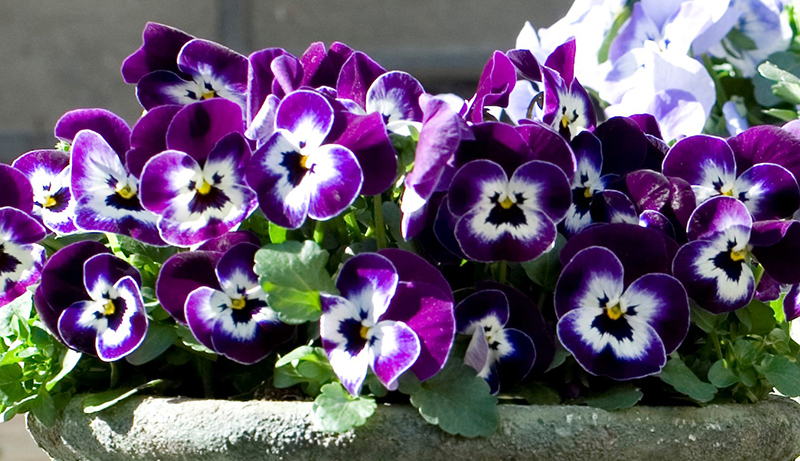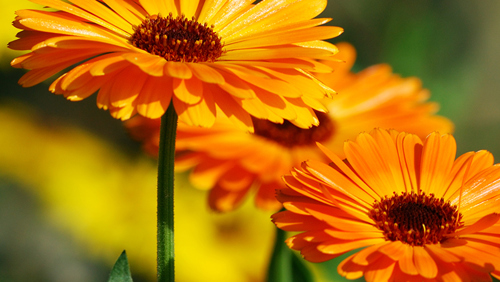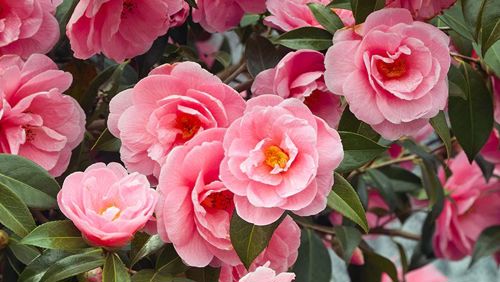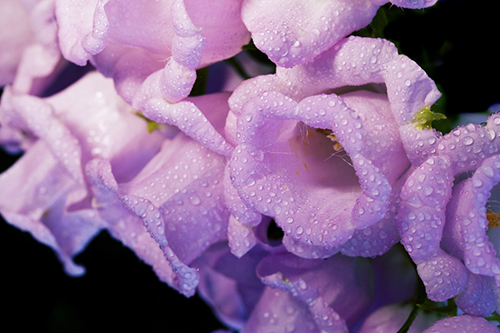Yates Account
Join now
Create a Yates account today!
Sign up to join the Yates Garden Club for monthly e-mails packed with seasonal inspiration, tips for success & exclusive promotions.
Plus if you’re a Garden Club member you can take part in the Yates Growing Community - a blog to share successes, get advice & win prizes in fun challenges along the way!

Forgot password
Enter the email address associated with your account, and we'll email you a new password.

Violas and Pansies
Violas (Viola cornuta) are sometimes considered the 'little sister' to pansies. Their bright little blooms or ‘faces’ jump out at you and provide abundant colour and character to your winter and spring garden. They come in gorgeous colours and are an old-fashioned favourite for good reason.
If you like cool tones, Viola 'Sorbet Violet Face' which produces masses of charming little flowers, with deep purple petals in contrast with crisp white faces, sketched with darkest purple. Or, try Viola 'Sorbet Marina' for an elegant statement, with it's delicate, graceful periwinkle-blue flowers. Both are unique and high-performing violas that look stunning in garden beds, pots or hanging baskets. And the flowers are edible, so you can add their gorgeous colour to your dishes for a bit of extra flair.
The traditional name for the original-type pansies was 'heartsease'. They certainly lift your spirits when they bloom in the bleakest part of the year! In the Victorian 'language of flowers' pansies signified thoughtfulness and compassion. Pansies are time-honoured favourites for winter or early spring colour. It’s not surprising – they’re cold tolerant, they flower for months and they come in an amazing range of colours. One of our favourites is Pansy Imperial Antique, which has a beautiful mix of pastel colour tones. Or, try Pansy 'Purple Lace', a rich and unique coloured pansy, royally robed in deep purple velvet, trimmed with a fine silver lace edge for contrast. For a more cheerful blend of bold, bright colours, try Pansy 'Giant Supreme'.
Pansies are best sown into pots or trays of Yates Black Magic Seed Raising Mix and transplanted carefully once the seedlings are big enough.

Calendulas
Yates Calendula ‘Pacific Beauty’ – taking only 10 weeks to flower, calendulas put on a bright show of apricot, yellow and orange flowers. Calendula flower petals can also add a sprinkle of colour and flair to a salad. Calendulas are useful because their cheerful orange and yellow daisies add warmth to the winter garden. They’re also helpful for deterring insect pests like whitefly, so it’s a good idea to plant them all around the garden – even among the vegies!
- Fill starter pots or trays with Yates Black Magic Seed Raising Mix. Sow seeds, lightly cover with mix, firm down and gently water in well. Keep moist at all times and place in a warm and sheltered position until seedlings have grown to 5 cm tall, then plant into the garden.
- Alternatively, sow direct where they are to grow in rows or in scattered clumps around the garden. Cover with Yates Black Magic Seed Raising Mix. Lightly firm down and keep moist. Just be sure to enrich the soil with Yates Thrive Natural Blood & Bone with Seaweed prior to sowing.
Canterbury Bells & Campanulas
There's a perception they are old-fashioned, but pretty never goes out of style! Try Yates Canterbury Bells 'Cup & Saucer' - a mixture of pink, white and blue, single or double, bell-shaped blooms. This variety is Campanula medium 'Calycanthema', so each flower sits on its own distinctive 'saucer'. A tall Old-World favourite, that creates a classic cottage garden effect when planted en masse.
Also from the Campanula family, you could try Yates Carpathian Bellflower - it's a showy perennial that produces masses of large, upturned, starry violet blue flowers.
Growing Tips:
-
For the best blooms, sow Canterbury Bells in a sunny position that gets at least 6 hours of sunshine a day.
- Deadhead spent flowers to encourage new growth and prolong the display.

Gerberas
Gerberas have such bright happy flowers, with their blooms sitting high and proud on upright stems and making a very popular and striking cut flower.
Yates Gerbera Colour Mix contains a colourful blend of pink, white, yellow and light to dark orange flower colours.
Growing Tips:
-
Gerberas are perennial plants that can be grown in both pots and garden beds in a sunny position that gets at least 6 hours of sunshine a day.
-
When grown from seed, gerberas do take a while to flower (30 – 50 weeks), but they are a very economical way to grow lots of plants.
-
Start seeds off in trays of Yates Black Magic Seed Raising Mix by just lightly pressing seeds into the surface (the seeds require light to germinate).
-
Water by misting and cover the tray with some plastic cling film to help retain moisture.
-
Seedlings will emerge in 2-3 weeks and can be transplanted when they are large enough to handle.
-
2 weeks after transplanting, start feeding with Yates Thrive Flower Fruit Soluble Fertiliser, which will encourage healthy foliage and lots of gorgeous flowers.
-
Trim off spent flowers regularly to promote a longer flowering period.
-
Gerberas can be susceptible to sap sucking aphids and diseases like powdery mildew. Regular sprays of Yates Rose Gun Spray Ready to Use will control these insect pests and diseases as well as caterpillars, which can also attack marigolds.

Camellia Care
Camellias laden with flowers bring gorgeous colour to our gardens from Autumn to Spring. Bees and birds love the flowers, and they are a great food source during the cooler months.
Whether your sasanquas have finished flowering, or your japonicas are about to burst forth into beautiful bloom, August is an ideal time to give camellias a good feed. This can help them replenish their reserves after busy weeks of flowering or nurture them while they flower and help set them up for a fantastic spring of fresh leaf growth.
Yates Thrive Camellia, Gardenia Blueberry Granular Plant Food is a specially developed fertiliser to feed acid loving plants like camellias. It contains extra potassium to promote lots of flowers as well as nitrogen and phosphorus to encourage healthy leaf and stem growth and a strong root system. Scatter Yates Thrive Camellia, Gardenia Blueberry Granular Plant Food around the root zone of camellias after they’ve finished flowering and water in well after applying.
Camellias can be susceptible to attack from scale insects, which can appear as white, grey, black or pink bumps along stems and leaves. Ants crawling up and down stems and sooty mould (a black or dark grey ash-like covering over leaves and stems) can both indicate the presence of scale insects, as they’re attracted to the sweet honeydew that is excreted by scale.
Scale can be controlled with regular sprays of Yates Nature’s Way Organic Citrus, Vegie Ornamental Spray Ready to Use. Ensure all stems and leaves (including the undersides) are sprayed to the point of run off and repeat every week if required. Dead scale may remain on the plant for a few weeks after spraying.
Pruning tip: if you need to prune camellias, prune just after flowering has finished. Pruning later than this can lead to reduced flowers next season.

















Share
Share this article on social media